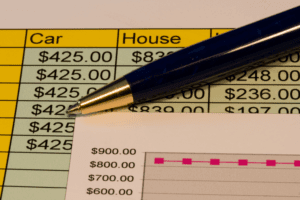
Analyzing production volumes and the incremental costs can help companies achieve economies of scale to optimize production. Economies of scale occur when increasing production leads to lower costs since the costs are spread out over a larger number of goods being produced. In other words, the average cost per unit declines as production increases. The fixed costs don’t usually change when incremental costs are added, meaning the cost of the equipment doesn’t fluctuate with production volumes. The contribution margin is the difference between total sales and total variable costs. For a business to be profitable, the contribution margin must exceed total fixed costs.
Ask a Financial Professional Any Question

Sunk, or past, costs are monies already spent or money that is already contracted to be spent. A decision on whether or not a new endeavour is started will have no effect on this cash flow, so sunk costs cannot be relevant. We can determine monthly demand for raw materials by multiplying the annual forecast by 12. We must then divide this total by the yearly production capacity to find how many units are needed each month. The number of days in a year, the holding cost per unit, and the carrying cost are some of the variables that influence how often an item will be ordered. Additionally, seasonality may also need to be considered when ordering items.
Would you prefer to work with a financial professional remotely or in-person?
Material B – The 100 units of the material already in inventory has no other use in the company, so if it is not used on the new product, then the assumption is that it would be sold for $12/unit. If the new product is made, this sale won’t happen and the cash flow is affected. The original purchase price of $10 is a sunk cost and so is not relevant.
Demonstration of the Scatter Graph Method to Calculate Future Costs at Varying Activity Levels
The company is concerned about the loss that is reported by Production Line B and is considering closing down that line. Closing down either production line would save 25% of the total fixed costs. The total fixed costs of $24m have been apportioned to each production line on the basis of the floor space occupied by each line in the factory. So, if you were evaluating the viability of a new production facility, then the rent of a building specially leased for the new facility is relevant. If a cost is going to occur regardless of the decision being examined, it is not a relevant cost. Decisions always involve at least two alternatives, and examining relevant costs is a tool that aids in this process.

Target Costing
- There is currently 800 hours of idle time available and any additional hours would be fulfilled by temporary staff that would be paid at $14/hour.
- In this case, the company has given up its opportunity to have a cash inflow from the asset sale.
- Relevant costing is just a refined application of such basic principles to business decisions.
- Depending on the size of the step cost increase, a manager may want to leave capacity where it is and instead outsource additional production, thereby avoiding the additional fixed cost.
- Relevant Cost of material is the incremental cost of raw material, which will change depending on the production quantity.
- A decision on whether or not a new endeavour is started will have no effect on this cash flow, so sunk costs cannot be relevant.
They are always composed of variable costs, which are the costs that fluctuate with production volume. It also helps a firm decide whether to manufacture a good or purchase it elsewhere. Incremental costs help to determine the profit maximization point for a company or when marginal costs equal marginal revenues. If a business is earning more incremental revenue (or marginal revenue) per product than the incremental cost of manufacturing or buying that product, then the business earns a profit. Incremental cost is the total cost incurred due to an additional unit of product being produced. Effective inventory management techniques such as proper demand forecasting, Just-In-Time (JIT) inventory management, and RFID technology can all help lower the cost per unit.
- Running a CVP analysis involves using several equations for price, cost, and other variables; these equations are plotted on a graph.
- While relevant costs are important, managers should also consider nonquantitative factors in decision-making.
- General OverheadsGeneral and administrative overheads which are not affected by the decisions under consideration should be ignored.
- The articles and research support materials available on this site are educational and are not intended to be investment or tax advice.
- A matter is relevant if there is a change in cash flow that is caused by the decision.
- The reason why there’s a lower incremental cost per unit is due to certain costs, such as fixed costs remaining constant.
Businesses can proactively identify cost reduction opportunities by conducting regular cost audits and analysis. This involves analyzing each cost component and exploring options for cost-saving measures, such as energy-efficient equipment, waste reduction, or process optimization. Our mission is to empower readers with the most factual and reliable financial information possible to help them make informed decisions for their individual needs. The articles and research support materials available on this site are educational and are not intended to be investment or tax advice. All such information is provided solely for convenience purposes only and all users thereof should be guided accordingly. For information pertaining to the registration status of 11 Financial, please contact the state securities regulators for those states in which 11 Financial maintains a registration filing.
Understanding Incremental Cost
Cost per unit information is needed in order to set prices high enough to generate a profit. The cost per unit is derived from the variable costs and fixed costs incurred by a production process, divided by the number of units produced. Variable costs, such as direct materials, vary roughly in proportion to the number of units produced, though this cost relevant cost per unit formula should decline somewhat as unit volumes increase, due to greater volume discounts. Examples of step costs are adding a new production facility or production equipment, adding a forklift, or adding a second or third shift. When a step cost is incurred, the total fixed cost will now incorporate the new step cost, which will increase the cost per unit.
- Committed costs are costs that would be incurred in the future but they cannot be avoided because the company has already committed to them through another decision which has been made.
- The contribution margin is part of the formula used to determine the breakeven point of sales.
- As the relevant cost is a net cash outflow, the machine should be sold rather than retained, updated and used.
- Otherwise, continue the segment but make changes to how costs are allocated.
- Finally, a trend line is added to the chart in order to assist managers in seeing if there is a positive, negative, or zero relationship between the activity level and cost.
All units produced are assumed to be sold, and all fixed costs must be stable in CVP analysis. Make vs. buy decisions are often an issue for a company that requires component parts to create a finished product. For example, a furniture manufacturer is considering an outside vendor to assemble and stain wood cabinets, which would then be finished in-house by adding handles and other details.

Some small businesses probably had to close completely rather than sustain continued losses because of poor sales and rising costs. Instead of carrying out Operation 1, the company could buy in components, for $15 per unit. This would allow production to be increased because the machine has to deal with only Operation 2.
